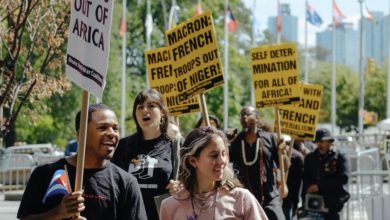The last Ethiopian troops in Somalia left Jan. 15, ending a two-year occupation. The hatred of the occupation was on full display when the pullout began just two days earlier, as hundreds of Somalis lined the route of the retreating military forces and cheered their departure.
|
|
Ethiopian troops invaded and occupied Somalia in 2007 at the behest of Washington. U.S. officials were alarmed that the government they backed, known as the Transitional Federal Government, was at risk of collapsing.
The TFG is a collection of various warlords who had been ripping Somalia apart since 1991, following the collapse of the last effective central government. The TFG, however, had no ability to govern, and was mired by internal rows.
Starting in 2006, the Islamic Courts Union—an umbrella group of Islamic organizations—swept across the country and seized effective control away from the U.S.-backed TFG. Using the war on terror as a smokescreen, Washington responded with air strikes on Somalia, and urged the Ethiopian forces to invade and prop up the TFG. The Ethiopian regime complied.
Somalia today consists of the small, self-governing region of Somaliland in the north, a semi-autonomous area known as Puntland in central region, and the larger territory still known as Somalia in the south. The country is located in the Horn of Africa, which sits next to major Middle Easter international shipping lanes of vital importance to Western capitalist in general and U.S. corporate interests in particular.
Those imperialist forces were not about to let the ICU displace the subservient TGF regime, despite the fact the ICU was the able to unify the country for the first time since 1991. Washington favors regimes that put up no resistance to its policies, and will go to great lengths to keep them in place.
The resistance to the Ethiopian occupation, however, was resilient. The various ICU groups gained in popularity and manpower, inflicting hundreds of casualties on the Ethiopian forces.
There is now a power vacuum in Somalia. The TFG government only controls pockets in Mogadishu, the capital, and Baidoa, where parliament sits—but even that slim hold is in danger. Forces loyal to the ICU and the more militant splinter group Al Shabab have taken over a number of installations left by the Ethiopians around the country, and had previously seized control of many towns. The TGF parliament is now trying to rule without President Abdullahi Yusuf, who resigned and moved backed to his native Puntland.
A small and somewhat ineffective African Union force still remains in Somalia. With Ethiopian forces out of the picture, Western capitalist governments are calling for the African Union presence to be strengthened. The war on terror and “piracy” will continue to be pretexts for at-will U.S. air and sea interventions in Somalia to bolster forces that will best accommodate the interests of foreign capital.
Washington and its allies created the situation now unfolding in Somalia through their aggressive intervention, which disrupted the first stable government in Somalia since 1991. The withdrawal of Ethiopia is an important step, but the only solution to the conflict is unhindered self-determination. The people of Somalia must be free to work out their internal affairs without interference from the U.S. government and its junior partners.






